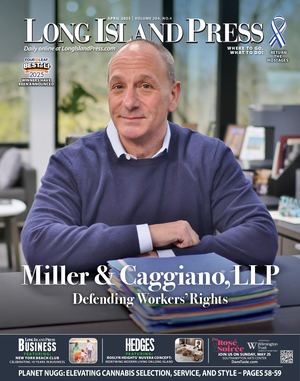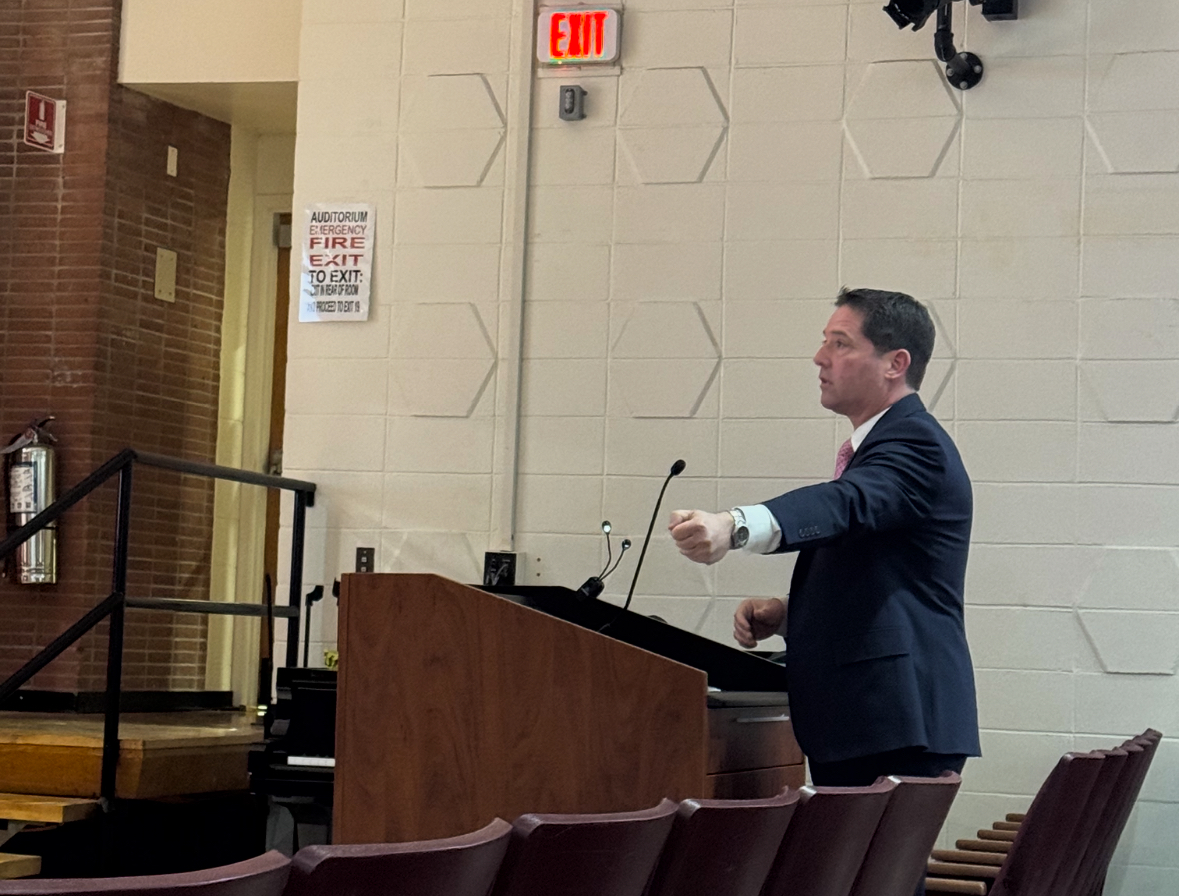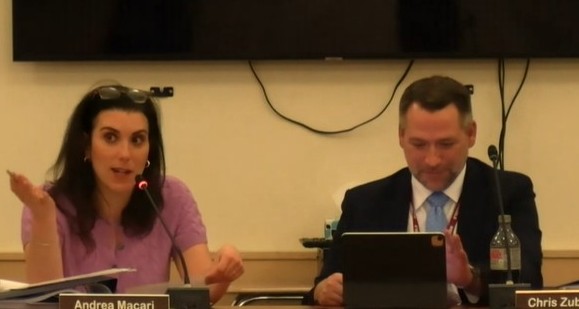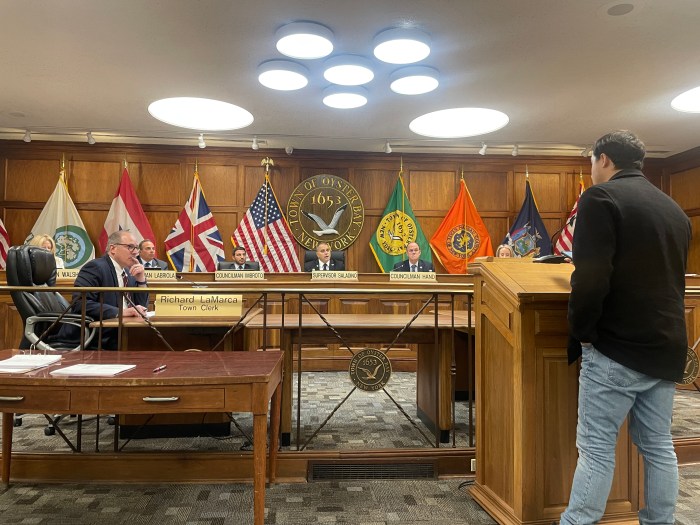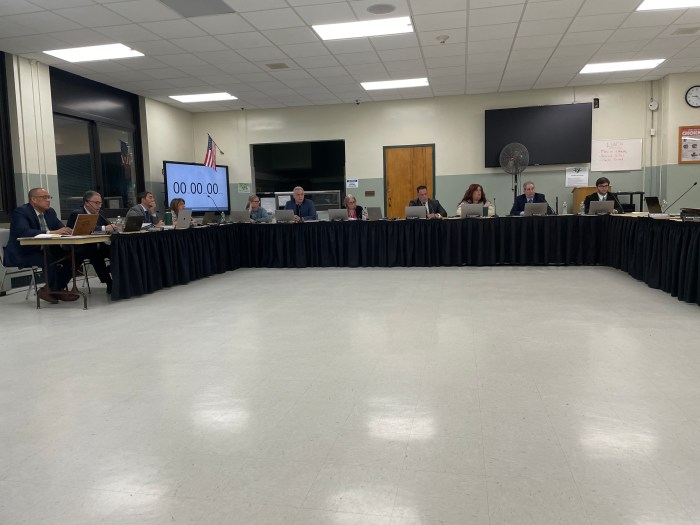The Syosset Board of Education discussed increasing its tax levy for the 2025-2026 budget at its Monday meeting.
The budget’s goal is to “preserve our programs and our services for students,” said Patricia Rufo, associate superintendent for business
The 25-26 school year “is shaping up to be a challenging budget season,” Rufo said. She said there have been increases in health insurance premiums, inflationary increases and a hike in transportation costs.
With the district’s growing enrollment size and external factors, Rufo said the growth has “put a lot of pressure on the budget.”
Rufo said the district will likely implement a tax cap of 2.52%, which is the maximum. The tax cap limits the maximum allowable increase in taxes based on factors such as the current tax levy, tax base growth factor, and Consumer Price Index.
Rufo said that while the district has historically operated below the the cap, this year, the budget will require a larger hike due to increased costs and premiums of district services,
“Over the last years, we’ve been over $11 million under the cap. But this time around, we’ll need to close the gap,” she said.
It has been over 10 years since the district implemented a tax levy increase equivalent to the cap.
In the 2024-2025 budget, the district approved a 3.21% increase, 0.02% lower than the maximum. In the 2023-2024 budget, the district adopted a 2.99% increase, 0.08% lower than the maximum.
Notably, in the 2020-2021 school year, the district implemented a 1.70% increase, more than 1.5% lower than the maximum allowable increase.
Rufo said the preliminary numbers showcase an increase of $1.8 million in staffing benefits, caused mainly by health insurance premiums. She said staffing is currently subject to change, which would impact the district’s cost.
“When we’ve had increases in these areas, we’ve been able to offset them by using our reserves,” Rufo said. She said reserves are used for workers’ compensation, unemployment, and other benefits.
Rufo said that in the current budget, the district is using approximately $7.2 million from its reserves, which it is looking to increase to about $8.2 million next year.
She said the program section of the budget is estimated to increase by approximately $7.5 million.
Rufo said the program section represents over 75% of the entire budget and includes teacher and staff salaries, instructional materials, transportation services, administrative fees, health supplies, athletic programs and extracurriculars, among other things.
The associate superintendent said the estimated state Foundation Aid, which is currently approximately $24 million, remains the same.
“In light of the uncertainty with the federal funding for our [2025-2026 budget], do you anticipate what effect that would have on our budget, and if so, what remedies would be applied?” asked Trustee Thomas Rotolo.
Rufo said the district’s budget includes approximately $2 million in federal funding, incorporating some of its Universal Pre-K program funding, cafeteria meal reimbursement, and Medicaid.
Superintendent Thomas Rogers said federal funding contributes to the district’s special education program. For example, he said five of the district’s 10 social workers are paid for by federal grants.
“So if those grant funds were to disappear, then we would either not be able to fund those positions, or we would have to fund them out of the school budget, which means that we would have to identify something else we’re spending money on and choose to spend that money instead on the social workers,” he said.
Rufo said the budget updates will be presented at the next Board of Education meeting April 23. The budget hearing will be May 12, and the budget vote will be May 20.
The board also discussed Syo+ Pathways, an existing program that will be expanded as the state changes its graduation requirements in upcoming years.
As part of the State Education Department’s changing graduation requirements, which will sunset the state’s three types of diplomas and move towards one standard kind of diploma, the high school will offer seals and endorsements based on curriculum “pathways,” said David Steinberg, assistant superintendent for secondary curriculum, instruction and assessment.
A completed pathway requires a minimum of 3.5 credits of approved coursework and an industry-standard exam.
Four approved pathways are offered to Syosset students, including Accounting and Finance, Pre-Engineering, Business Management and Fashion Design & Merchandising Management. Steinberg said pathways in development include Health Services, Pre-Medical and Education.
He said the school can develop its own pathways to include specific courses and subjects in the future.
Steinberg said the pathways “allow us to meet our students where they are. He said student interest will guide the school’s pathways.
He said students do not “declare” their pathways when they enter high school. Instead, he said guidance councelors will look at their transcripts in junior year—after they’ve chosen their own electives—and identify how their “natural choice” selection aligns with available pathways.
He said 40 students in the Class of 2025 “unknowingly” completed a pathway throughout their high school careers, 39 of whom took the industry exam, which is pass/fail. All students who decided to take the exams passed them, he said.
Steinberg said there are no negative effects from taking and failing the industry exam because students can retake it, and it is not recorded on their transcript for colleges if they do not pass. Additionally, he said that by the time students take the industry exam and receive their diploma with the pathway endorsement, they have typically already committed to a college.
Trustee Susan Falkove said one of her kids is in the eighth grade, and his classmates’ parents have already begun discussing which classes to take throughout high school to earn a pathway.
“They’re already concerned about making sure that’s something else they can check the box of,” she said. She said two of her children are at business schools in college but would not have qualified for the business pathway in high school due to their course selection.
“They don’t really have a choice,” she said.
“That’s not the intent of the program at all,” Steinberg said. He said students will not have to choose a subject at the beginning of high school.
Some trustees said the pathways may help students examine different technical skills and career paths before college, which may help them determine their interests.
Steinberg said district officials have predicted that the pathway programs will help students in the future.
